 Fleet Aircraft Carrier, R06 1951-1972
Fleet Aircraft Carrier, R06 1951-1972British Cold War Carriers:
Majestic class | Centaur class | HMS Victorious | HMS Eagle | HMS Ark Royal | HMS Hermes | CVA-01 project | Invincible class | HMS Argus | Queen Elisabeth class (planned)HMS Eagle was an Audacious-class aircraft carrier and largest British carrier until the modern Queen Elizabeth-class of the 21st century. She was a near sister of Ark Royal but differed significantly. Laid down initally on 24 October 1942 at Harland and Wolff, Belfast part of the buildup for future Pacific carriers she was suspended. As HMS Audacious, she was the most advanced of the class, cancelled, and was renamed as Eagle on 21 January 1946, launched in March with the intent to complete her as a modernized fleet carrier by October 1951 but without an angled flight deck, added three years later. In 1952 she took part in NATO Exercise Mainbrace and served until decommissioned in 1972 and three modernizations. #coldwar #royalnavy #coldwarroyalnavy #hmseagle #aircraftcarrier
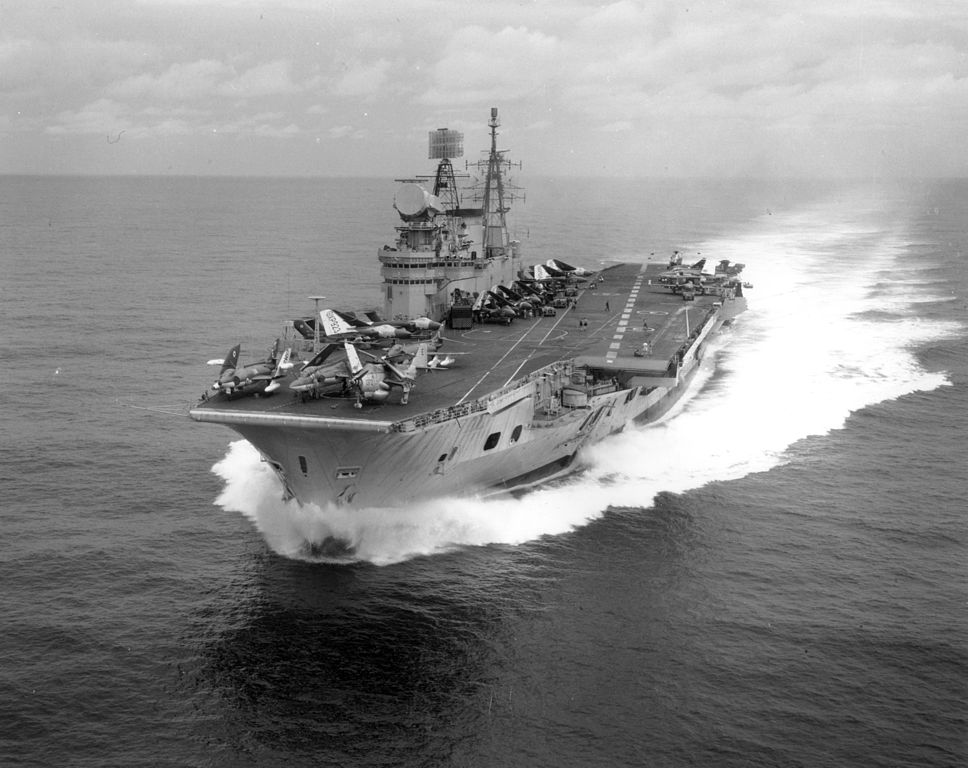
HMS Eagle – Crown Copyright CC
Origin of the design: Audacious class
Originally intended to form one of a class of four 32,500t improved Implacable, Audacious was quite far advanced at the end of the war and was therefore earmarked for completion more or less as designed. Her name as changed to Eagle in January 1946 because the original Eagle had just been cancelled. Her surviving sister Ark Royal, however, was held up to allow numerous improvements to be incorporated, and so the two ships differed in many details. A new legend was drawn up in 1946 for both ships, raising 36,970t (standard), 45,720t (deep).
The Audacious class was a WW2 design. Originally a class of four ships: HMS Audacious, Eagle, Irresistible and Africa. They were a heavy fleet carrier design, fully armoured, and much improved compared to the previous Implacable class. It came from early war lessons in 1941 and already were needed improved flight deck armour, for protection against 500lbs bombs and a better designed armoured box, increased aircraft capacity, aircraft operability and thus, flight deck size. Drawings were submitted by November 1941, requesting at first 27,000 ton ships with a larger forward lift of 45ft by 33ft and reviewed hangars to accommodate four rows of aircraft, 54 total instead of the three rows. Yards-induced hull limitations however leanbed towards keeping Implacable’s 14ft hangars, until engineers figured how to reducing the depth of structural beams.
This new fleet carrier admiralty program was started in early 1942, focusing on more hangar space and larger full air complement (hangar+deck) of 80 aircraft (to compare, 60 on Implacable, 45 on Illustrious). By Late 1942 the Joint Technical Committee reviewed size and performance specs for what was known as the Irresistible class, calculating a weight increase in aircraft from 11,000lbs to 30,000lbs and later came out with a hangar height of 17ft 6in (USN standard) plus free take-off distance of no less than 500ft, stalling speed of 75kts with new arrester gear but imposed a folded width to 13ft 6in to match the four abreast housing. On November 30, 1941, however, the Irresistible programme had been cancelled already and a new program (Audacious class) was looked upon.
The most obvious end solution was to keep the Ark Royal (1937) solution of double storied hangars, but with greater height than on the Implacable. It was however realised that the hangar height would not be sufficient for the new aircraft expected to enter service, and so the design was considerably enlarged in 1942, since it was a matter of stability. Since the initial design was limited in size to the former Implacable class hull to gain design time, it ended stretched to compensate for the higher double hangars.
The flight deck as originally designed was to be 795 feet by 102 feet 6 inches (242.3 x 31.2m or 7,560m²) clear abreast the island and 55 ft () above the deep loaded waterline. Two BH-V catapults were installed capable of launching 30,000 Ib (13.6t) at 75 knots (139 km/h), and two rectangular lifts of 54 x 44 feet (16.5 x 10 m), capable of lifting the same weight. The lifts connected both internal hangar, protected inside the armoured “box” inspired by previous armoured carrier designs. Each has an internal height of 17 feet 6 in (5.3) and represented a total floor area of 52,100 square feet (4,840 m2) only 480 square feet less than the unprotected original 1937 Ark Royal. Volume for each was 25,652m³. Petrol stowage was however relatively limited to the large air park at 103,300 gallons or 465,000 liters avgas.
They were to be the best fleet carriers in the Royal Navy and true British equivalent to the US Essex class in construction at the same time.
Protection-wise, they were akso improved. The flight deck was to have a 4-inches (102 mm) hardened armour plating backed up by 1 inch structural steel, so 5 inches total, more than previous designs. They would have fare well in the Pacific’s 1945 Kamikaze maelstrom. The lower hangar deck was protected by 2-inches and a half, vertical and 1 inch and a half plating for horizontal protection, while the magazines and steering gear were protected by 4 inches horizontal protection. Underwater protection was a modification of the previous system, a sandwich with oil fuel and seawater filled the two layers of external compartments, and was designed to stand a 1200 ib charge up to 2000 ib.
To be precise:
Flight deck 102mm armour plus 25mm steel plates inside, 37mm outside citadel.
64-25mm lower hangar deck
Magazines and steering gear 114 down to 51mm vertical, 102mm horizontal armour.
Hangar sides had 38mm protection.
Underwater protection: Longitudinal bulkhead 63mm thick.
The ships were still quite large despite being barely longer than the Indefatigable (244 versus 233 meters overall) and had a tactical diameter was about 720 yards, with a fuel oil capacity greater than previous designs. The initial light AA back in 1943 was no less than sixty 20 mm Oerlikon guns, and altered by late 1945 to sixty-four 40 mm Bofors in eight of the new sextuple mounts in development, as well as two twin and twelve single mounts completed by 18 Oerlikon 20 mm.
The class comprised originally four ships, later Africa was assigned to the next Malta class (57,000t fully loaded), the peak of British Fleet carrier development.
HMS Audacious later R05 as completed was laid down at Harland and Wolff, Belfast on 24 October, 1942 as HMS Audacious, renamed 1946 as Eagle. She was launched on 19 March, 1946 but not completed before 5 October, 1951.
HMS Irresistible later R09 was laid down at Cammell Laird, Birkenhead on 3 May, 1943 as HMS Irresistible renamed as HMS Ark Royal 1945, launched 3 May, 1950 and completed 22 February, 1955 with an angled deck. Both Eagle and Ark Royal are seen as separate classes.
HMS Eagle was ordered from Swan Hunter, Wallsend-on-Tyne in August 1942 but transferred to Vickers-Armstrong in December that year and laid down eventually on 19 April, 1944 N/then Cancelled in January 1946 23% complete.
HMS Africa was ordered from Fairfield, Govan on 12 July 1943 and later Re-ordered as a Malta-class aircraft carrier in 1944. She was Cancelled 15 October, 1945.
⚙ specifications 1944, Audacious design |
|
| Displacement | 36,800 – 46,000 tonnes FL |
| Dimensions | 720/803 x 113 x 31 ft mean (219,45/244.97 x 34.37 x 9.47 m) |
| Propulsion | 4 shafts Parsons Geared Turbines, 8 adm. 3 drum boilers, 152,000 shp |
| Speed | 32 knots |
| Range | 7,490t oil, 5000 nm at 24 kts |
| Armament | See notes |
| Protection | See notes |
| Air Group | 78 aircraft 1944 |
| Crew | 2740 with air group |
Design of HMS Eagle
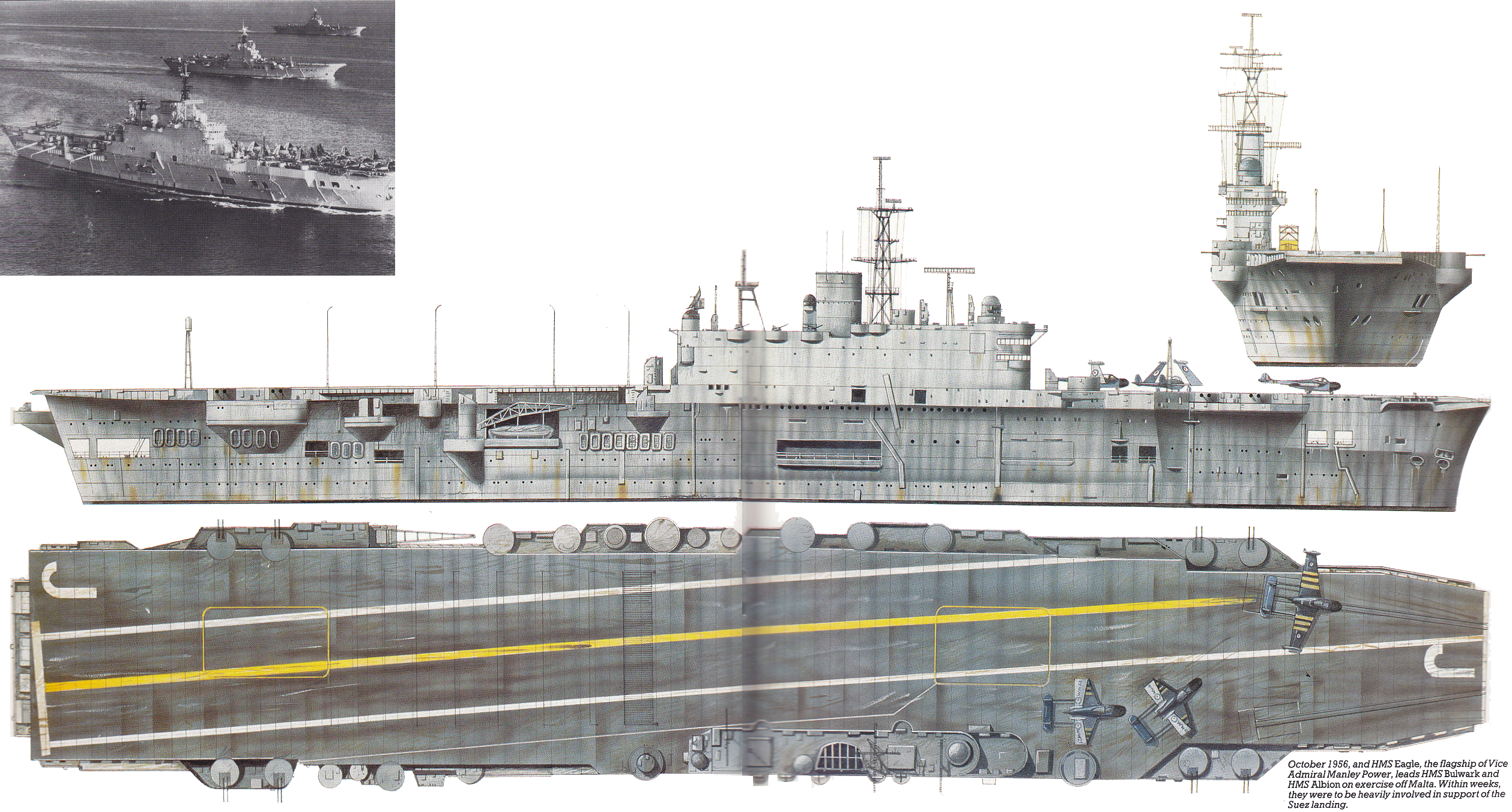
When the war ended in 1945, HMS Audacious was not completed yet, and her future was uncertain in a new context of budget restrictions for the Royal Navy. For lighter fleet carriers of the 1942 program which were not completed, the solution found was generaly to complete them to be sold abroad. However the RN insisted on maintaining a large fleet carrier, and the two Audacious class which were quite advanced seemed better suited for early jets or future heavier aircraft in general. They lobbied the new government to not scrap them. See a nice cutaway
In 1946 HMS Audacious had its construction slowed to concentrate resources on more urgent requirements such as construction of landing craft and escorts, and with the third ship, to be name Eagle, only 26% complete, she was canceled in December 1945, Audacious being renamed Eagle on 21 January 1946 when it was decided to complete her eventually after an agreement was found. The new HMS Eagle was launched by Princess Elizabeth on 19 March 1946 but construction stayed in limbo for three years. This time, this was Royal Navy’s “fault” as the admiralty tried to review requirements first setup in 1942 in light not only of WW2 lessons, notably in the Pacific, but also the rapidly moving aircraft typology, weight and speed. It was eventually decided to complete Eagle to her last 1945 design revision to have her operational as soon as possible, but compromising as having HMS Victorious modernized while Ark Royal would be completed to an improved design, followed by the smaller Hermes. HMS Eagle was fully completed on 1 October 1951 as a result, but she had a straight flight deck, proving an issue for aircraft operations, apart WW2 types that might be useful over Korea.
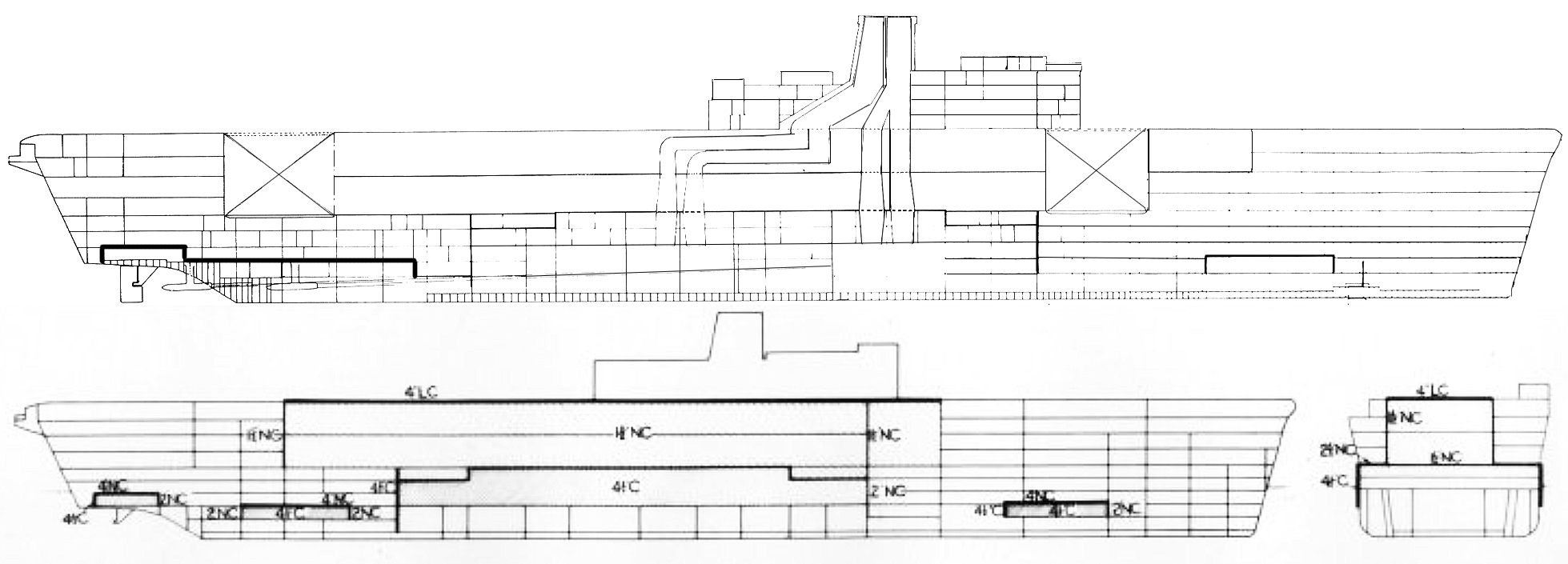
Cutout of the class, internal layout and armour scheme.
Eagle’s design followed closely the pattern of the wartime armoured carriers, with eight twin 4.5in DP gun mountings in quad sponsons, but the close-range armament was the most modern available. Eight six-barrelled 40mm Bofors Mk 6, each with its own CRBF fire control director, were mounted, four on the port side, two on the starboard side and one at each end of the island. In addition, there were nine single 40mm Mk 7 on the island and on the port side, and before completion two twin 40mm Mk 5 were added in a sponson under the overhang of the flight deck at the stern. Original first refit provision of radars comprised the models 960, 982, 983, 275, 262, 974. Also in 1951 she was armed with sixteen 4.5 in/45 Mk6, forty-eight 40mm/60 Mk6 AA, four 40mm/60 Mk5 AA, 9x 40mm/60 Mk7 AA, and had a total of 60 aircraft, of course piston-engine at that time still, but the first few jets such as the De Havilland Venom. This gave the phenomenal total of twelve radar directors controlling sixteen 4.5in and 48-40mm barrels, with a further 13-40mm barrels in control.
Hull and general design
As completed to her revised design, HMS Eagle ended a bit different than Audacious. She now displaced 43,060 fully loaded and after her 1963 last refit, reached nearly 45,000 tonnes standard and 53,390 tonnes fully loaded. Her flight deck did not changed but in 1964 reached 247.4 meters as refitted. Through her beam did not changed, at 34.4 meters at the waterline, she went for the flight deck width from 31.2 meters to 52.1 meters wide as completed, the biggest change. It was hoped to be able to both launch and recovery larger aircraft, including 1st gen jets. Draught went from 9.50 to 11 meters fully loaded. In 1951 she had her standard axial flight deck as completed, but in 1954 this was revised to a 5.5° angled flight deck and in 1964 to a 8.5° angled flight deck.
When completed she had a wider, beefier flight deck, the largest in use in any British carrier so far. It could be used to park many more aircraft in safer conditions while enabling, despite the absence of angle deck at first, landing/TO operation daily.
Another aspect most striking for this class, as it was common to Ark Royal, was the island’s size, quite large to accommodate well separated funnel uptakes and provide extra and welcome space for well tought command and control equipment, the fruit of BPF operations in the Pacific. Eagle was the first British carrier featuring a multi-level operations room, a command centre with mezzanine space which housing officers overlooking the aircraft direction room and tactical situation. Stability however imposed only a light anti-splinter protection.
The initial 1942 two tripod masts morphed in 1945-50 as the radar size grew to sturdy lattice ones.
Powerplant
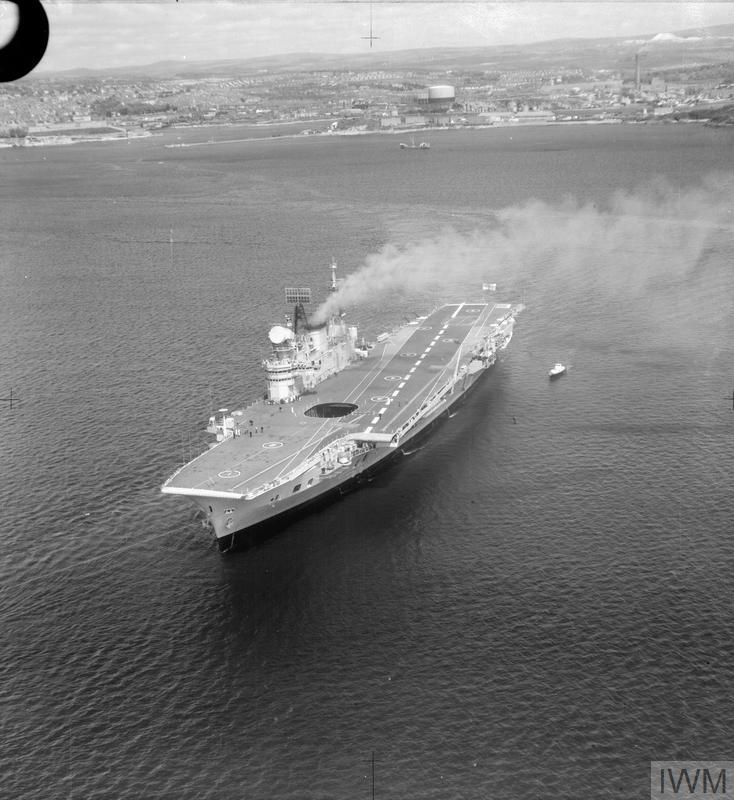
No change was done on this chapter, compared to the Audacious class. She had the same four shafts, driven by Parsons combined low and high pressure geared steam turbines, fed by eight Admiralty 3-drum boilers. Speed however decreased due to the greater displacement down to 31 knots on trials instead of 32 over the same 152k horsepower figure. She carried also less oil than previous antcipated (7490t) down to 5500t to increase avgas storage. So she went also for autonomy from 5000 down to 4500 at 24 knots cruise speed. This was the same for her sister Ark Royal. In the end, the loss of oil benefited to avgas stowage, with 1,700,000l of kerosene and 72,000l of petrol. The hangar, lifts remained the same as well as a the catapults BH-V. This is where her sister Ark Royal differed much.
Armament
The greatest design revision in 1945 was the armament, with eight twin 120mm/45 Mk 6 (5 in) duel purpose turrets like previous armoured carriers, and eight of the brand new sextuple 40mm/60 Mk 6 Bofors mounts as well as two twin 40mm/60 Mk 5, and nine 40mm/60 Mk 7 Bofors. The Oerlikons were all but eliminated as the Pacific war showed them near useless against approaching aircraft at 600 kph. To compare, the Audacious class had initially eight twin 4.5-in/45 QF Mark III HA mounts and sixty-four 2-pdr pompom in quadruple mounts.
5-in (120mm)/45 Mk 6 DP guns
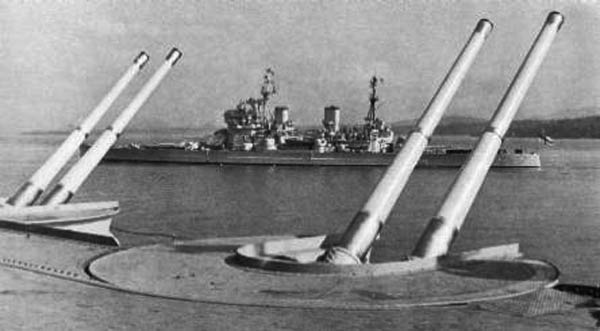
These were essentially the same turreted mounts placed on the four corners of the hull, at the same height of the flight deck for corss-firing as the previous Illustrious/Indefatigable.
They were mounted in eight powered RP 10 Mk II** twin-gun turrets in sponsons on each corner of the hull. unlike the Illustrious, and also a result of war lessons, the turret roofs were flat and flush with the flight deck. The previous Mark II could fire shells at 2,449 ft/s (746 m/s), 12 rpm, to 20,760 yards (18,980 m) and at +45° up to 41,000 feet (12,000 m).
During the 1950s, a change in weapons systems nomenclature focused on the gun mount and the QF Mark V on mounting BD Mark VI became the Mark 6. The Mark 7 was never produced (Malta-class carriers). Mark 6 mounting, were fitted also on the Leopard-class frigates and County and Daring-class destroyers. These were later replaced by the 4.5 in/55 Mark 8.
The Mark V guns used remote power control (RPC) to automatically train and elevate, slaved to the director plus with a high rate-of-fire by automatic ramming. They came with separate high-angle and low-angle hoists for AA or SAP/HE for a rate of fire of 24 rounds per minute power-loaded, 12–14 hand-loaded, 18 in burst mode when hand-loaded. 800 were built.
Muzzle velocity was 2,449 ft/s (746 m/s) and Maxfiring range 20,750 yd (18,970 m) at 2,449 ft/s (746 m/s) with a ceiling of 41,000 ft (12,500 m). In the 1950s however thaty technlogy was ver much seen as obsolete against gigh altitude Soviet jet bombers. One was removed in 1955 (see later) and then she was down to her two forward mounts after 1964.
40mm/60 Mk 6 Sextuple mounts
The Mark VI was an experimental six-barreled fed by large trays, remote control with a dedicated radar-equipped director. It was long to develop and only shown on HMS Vanguard and some carriers such as HMS Eagle. The Bofors mounts could elevate to +90° and fire a 1.97-pound (0.89 kg) shell at 2,890 ft/s (880 m/s) to 10,750 yards (9,830 m). Rate of fire was 120 rounds per minute but ammunition storage is estimated c900 rounds per gun. One was removed in 1955 (see later). They were sponsoned on either side close together amidships, six on starboard, two port as per apparent plans.
The rest of the twins and single were located where possible, mostly starboard and also in the “inner perimeter” of the flight deck, the singles location however is unclear. They were removed from 1955 onwards mostly for stability reasons and being obsolete.
Revisions
In 1955, Eagle was refitted for the first time, gaining a 5.5 degree angled deck while having a single sextuple 40mm/60 retired as well as three single 40mm/60. She also lost her type 262 radar
From May 1959 to May 1964 she had her largest upgrade, gaining a new angled deck at 8.5°, new B5-4 type catapult (13.6t planes at 195 km/h) with a longer starboard catapult at 46 m and port catapult at 61 m.
The flight deck thickness was reduced to 38-25mm while electric Power was doubled to serve better radars. She gain six quad Sea Cat GWS22 SAM (24 Sea Cat) launcher and kept four twn 114mm/45 Mk 6 guns forward, and fitted with the type 984, type 963, type 965 (AKE-2), type 242Q, type 293Q, 4x type 275 radars, ADA CCS. The lower hangar was its half sacrified to serve as workshops, reducing her practical air park of mostly jets down 45 aircraft.
Sea Cat
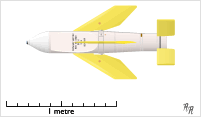 These were installed in replacement of her Bofors mounts for close SAM defence. The six Sea Cat launchers replaced former 6-tubes Bofors mounts on a per-mount basis, being designed in 1960 short-range SAM precisely for this role. They were world’s first operational shipboard point-defence missile system, with the existing fire-control systems.
These were installed in replacement of her Bofors mounts for close SAM defence. The six Sea Cat launchers replaced former 6-tubes Bofors mounts on a per-mount basis, being designed in 1960 short-range SAM precisely for this role. They were world’s first operational shipboard point-defence missile system, with the existing fire-control systems.
Main specs:
68 kg (150 lb) for 1.48 x 0.22 x 0.70 m (58 in x 8.7 in x 28 in), Warhead 40 lb (18 kg) continuous-rod, Proximity fuse, 2 stage motor, range 500–5,000 m at Mach 0.8 Guidance SACLOS, radio link, full auto.
Protection
Postwar estimation of armour was generally saw in a less favourable way, the best protection would be procured by a larger air group. Her armour belt was thus decreased from 114 (4.5 in) down to 102 mm (4 in) compared to the Audacious class, the hangar sides were down to 25 mm (1 inch) instead of 38 mm (1.5 inches) and the flight deck down to 102mm (4 in) armour over 25mm (1 in) steel plating instead of 114+38 mm, 64-38mm in the lower hangar deck. Magazines and steering gear were still protected however by 114 mm (4.5 in) down to 51 mm (2.5 in) vertical and 102mm (4 in) horizontal armour. This weight was kept to regain stability. Underwater protection stayed the same as above able to resist the explosion of 545 kg warhead and possibly 908 kg.
Sensors
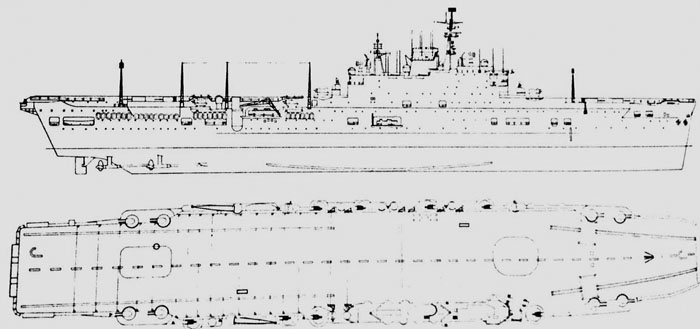
As per Conway’s specs, HMS Eagle received the Type 960, 982, 983, 275, 262, 974 and later post refit, Type 984, 963, 965 (AKE-2).
Type 960: VHF-band long-range warning radar. 86-90 MHz, 0-7 rpm, PRF 250 Hz pwd 5-15 µs, bwd 35° PP 450 kW RA 175 NM (324 km)
Type 940: Only planned for Audacious class, no installed.
Type 982: Air direction radar, audacious and Centaur class
Type 983: 3 GHz S band height finding radar, PTF 500 Hz pwd 0.7-1.9 µs, bwd β5° ε2.1°, PP 500 kW, RA 130 km 7 min⁻¹ rpm
Type 242Q: X-band approach guidance, surveillance and weather radar More
Type 293Q: S band surveillance and target designation radar More
Type 275: Four F-Band fire control radars for the main 4.5 in DP turrets more
Type 262: X Band, Ten Fore control radars the Bofors mounts More
Type 974 radar: X-band surface search radar used for pilotage and navigation. More
Type 984 radar: Famous light projector shaped main surveillance radar, S band RA 180 nmi (330 km) More
Type 963 radar: Carrier controlled approach radar, no more info.
Type 965 radar: VHF-band long-range early warning suveillance double bedstead radar More
Air Group
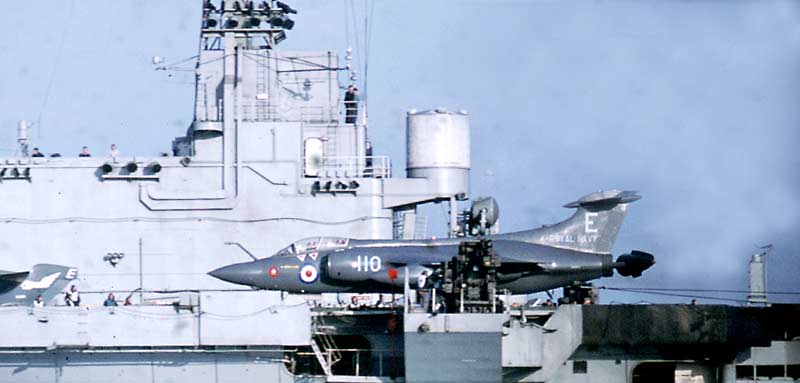
Buccaneer landing in January 1970, Mediterreanean
It changed considerably. For the Audacious class the hangar capacity was 64 aircraft, 78 by combining a deck park (as customary in the Pacific). As completed this was down to 60, and after her 1964 refit this went down to 45 and when close to decommission in 1971 she only carried 39 aircraft.
Composition changed enormously.
As planned in 1942 for a completion hoped in 1945 the Audacious class should have feature the later Seafire and possibly awaited Seafang and Hawker sea Fury, the Sea Hornet, and a provisional park comprising the latest Seafire Mark 10, Fairey Albacore and Firefly, possibly the Hellcat, Corsair and Avenger if deployed in the Pacific with the BPF.
As planned when completed in 1951, HMS Eagle was qualified to operate the following: Fairey Firefly, De Havilland Sea Hornet, Hawker Sea Fury, Supermarine Attacker jets, Fairey Barracuda, Blackburn Firebrand torpedo bombers, Fairey Firefly ASW planes, and helicopters Westland Hoverfly, Dragonfly, and Bristol Sycamore.
In 1953 she operated 16 Attacker FB.2, 8 Sea Hornet NF.21, 16 Fairey Firefly, 4 Skyraider AEW.1 and a single Dragonfly HR.5 used for SAR
In 1956 she operated 16 Sea Hawk FGA.6, 14 Sea Venom FAW.21, 6 Wyvern S.4 and 6 Gannet AS.4
In 1966 she operated 16 Sea Vixen FAW.2, 4 Scimitar F.1, 14 Buccaneer S.1, 4 Gannet AEW.3, 5 Wessex HAS.1 plus a single SAR Whirlwind HAR.5

Supermarine Attacker F.1, N°800 NAS HMS Eagle 1952

De Havilland Sea Venom FAW 21 FAA, 892 NAS Op. Musketeer, HMS Eagle, Suez 1956

Hawker Seahawk FGA6 FAA 899 NAS Op. Musketeer, HMS Eagle 1956

De Havilland Sea Vixen FAW.2 FAA 899 Sqn HMS Eagle 1974

Blackburn Buccaneer, No.800 Naval Air Squadron, HMS Eagle, June 1971.
(In preparation)
Fairey Gannet AEW3
⚙ specifications 1964 |
|
| Displacement | 45,000 – 53,390 tonnes FL |
| Dimensions | 219,5/247.4 m x 34.3/52.1 m oa, 11 m |
| Propulsion | 4 shafts Geared Turbines, 8 adm. 3 drum boilers, 152,000 shp |
| Speed | 31 knots |
| Range | 4500 nm/24 kts |
| Armament | 4×2 4.5-in, 6×4 Seacat GWS22 SAM |
| Protection | Belt 4-in, FD 4 in +1 in, HA sides 1 in, Mag/Steering 2.5 in/4 in. |
| Sensors | Radar 984, 963, 965 (AKE-2) |
| Air Group | 45 aircraft 1964, see notes |
| Crew | 2,750 with air group |
Career of HMS Eagle
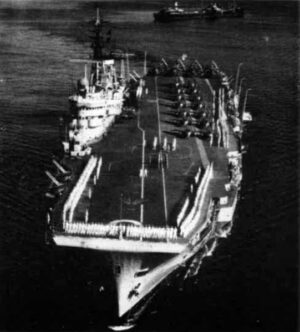 As the only large modern carrier, Eagle was a major addition to the RN’s strength when she started her builder’s trials in October 1951. On trials, she made 30.53kts at 44,250t 156,630shp and 29,6kts at deep load (49,950t). Endurance was calculated at 4,500nm at 24kts.
As the only large modern carrier, Eagle was a major addition to the RN’s strength when she started her builder’s trials in October 1951. On trials, she made 30.53kts at 44,250t 156,630shp and 29,6kts at deep load (49,950t). Endurance was calculated at 4,500nm at 24kts.
Op. Mainbrace & Early Mediterranean service
Eagle worked up her crew in 1952 and embarked her first initial air wing, two squadrons of Supermarine Attacker jet fighters, two squadrons of Fairey Firefly for ASW, plus a squadron of Blackburn Firebrand attack aircraft. She took part in her first major operation, the NATO exercise “Mainbrace”, at the end of 1952.
Mainbrace was the first large-scale naval exercise undertaken by the newly established Allied Command Atlantic (ACLANT), one of the two principal military commands of the North Atlantic Treaty Organization (NATO). It was part of a series of NATO exercises jointly commanded by Supreme Allied Commander Atlantic Admiral Lynde D. McCormick, USN, and Supreme Allied Commander Europe General Matthew B. Ridgeway, U.S. Army, during the fall of 1952.
In early 1953 she visited the Mediterranean, notabl stopping at Malta, before returning home in June, taking part in the Fleet Review at Spithead (Coronation of Queen Elizabeth II) and joined the Mediterranean back again in February 1954 for various exercises before returning home in May.
First Major refit
From June 1954 to February 1955 she was under her first refit, emerging with a 5.5° angled deck and the new mirror landing sight. Apart from realignment of the arrester wires and other flight deck fittings, the change necessitated the removal of one Mk 6 Bofors mounting from the port side; the three single Mk 7s were also removed from the port side of the island.
This refi at Devonport Dockyard was focused on easing jet operations owing to her width to accommodate more aircraft without major structural changes but a rearranged arrestor gear, fitting of a modern mirror landing aid and the sacrifice of Bofors guns, single 6x Mark-6, three single.
Suez crisis
After working-up, she was deployed to the Mediterranean and took part in autumn NATO exercises, North Atlantic. May 1956 saw her deployed to Malta to work up for a new large scale fleet Mediterranean exercize but on 1st November 1956 Eagle’s Sea Hawks, Wyverns and Sea Venoms began six days of attacks on Egyptian airfields and positions during the Anglo-French attempt to seize the Suez Canal under command of Captain H C D MacLean, DSC.
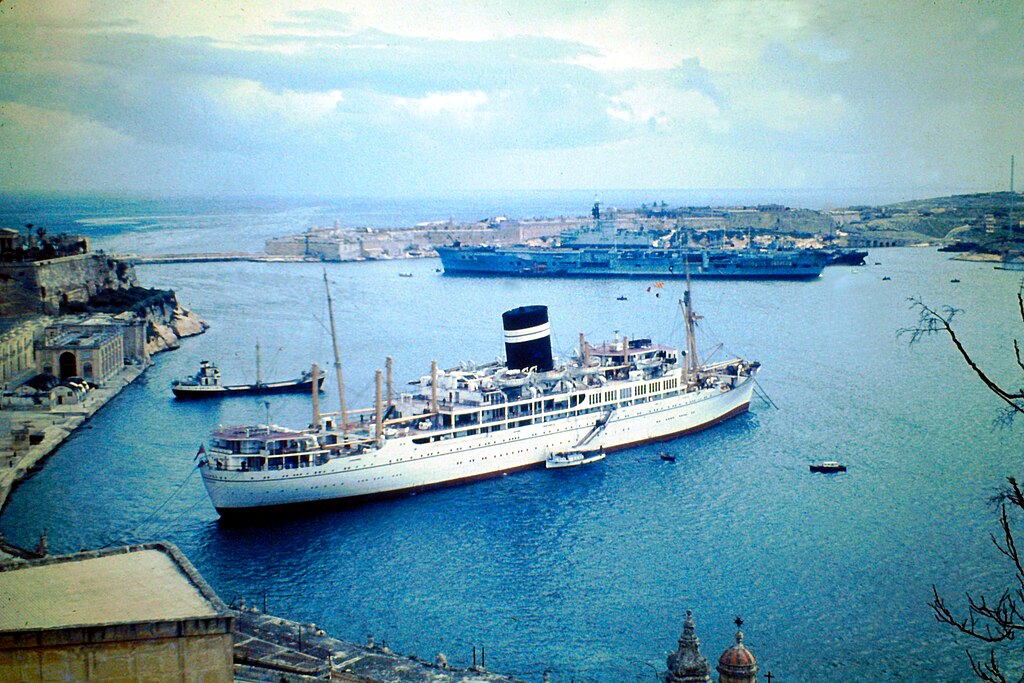
Eagle in Grand Harbour, Malta in 1956-57 in the background
The air group flew 621 sorties despite having a defective catapult.
On her return to Devonport she had a short refit and then returned to the Mediterranean, where she spent most of the remainder of the commission.
Second Major refit
From mid-1959 to May 1964 she underwent complete rebuilding at Devonport to bring her up to the standard of Victorious: She received a fully (8°) angled deck, steam catapults and the long-range 3-D air warning Type 984 rader were fitted. The opportunity was taken to renew her boiler fire-bricks, for these had given constant trouble since completion.
The Admiralty originally wanted at first a complete rebuild as HMS Victorious, but costs reduced ambitions. She would not have a change and overhaul of her geared steam turbines, boilers, whereas in drydock she was to be given a stretched hull. Instead the “austere” modernization consisted in improving electronic awareness with a better 3D radar and processing capability. Since she was often deployed in the Med, she obtained the installation of air conditioning.
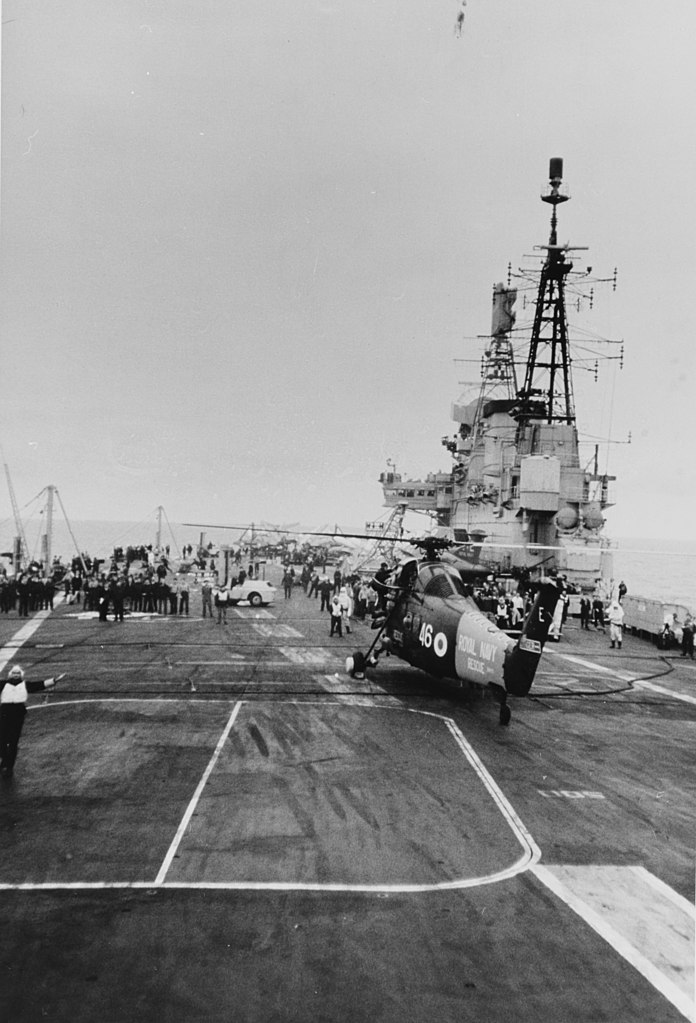
RFA Olna Oiler resupplied HMS Eagle in 1969 during Operation peacekeeper
As rebuilt in 1959-1964 she was given a short lattice foremast carrying “double bedstead’ surveillance radar, a Type 965 (AKE-2) and the forward 4.5in sponsons were removed to increase internal accommodation. The close-range armament was entirely replaced by six quadruple Seacat GWS22 SAM systems, four sponsoned port and starboard forward and aft, one right aft under the flight deck overhang and one on the starboard side between the island and the after sponson. A less obvious but important improvement was to boost the generating capacity to 8250kW, nearly double the original power, while flight deck armour was reduced from 4-in to 1-in.
The island also was completely rebuilt and reinforced to support the massive new “searchlight” 3D Type 984 radar whereas all the compoting power was installed below as well as a new Command Center and new display, complete rewiring for the ability to process, track, rank 100 targets simultaneously, and the early 984 system common to Hermes and Victorious. The flight deck received a new reinforced, 2½ inch armoured deck as well as the new steam BS5s catapults, 151 ft (46 m) long on the port side forward, 199 ft (61 m) at the waist and the new DAX I arrester gear as well as modenrized mirror sights. The whole DC electrical systems was overhaul as well as new AC generators to almost double electric power.
The Seacat missile system was installed but she kept her aft four 4.5 inch gun turrets and in the end, her machinery was fully overhauled, by default of being changed altogether. d
This refit spanned five years and costed a lot, but when completed she rose to 44,100 tons standard and 54,100 tons fully loaded, making her the largest British aircraft carrier in service at a global cost of £31 million.
This was intended to give her at least another 10 years, so until 1974, with the capability to operate the nuclear-capable Blackburn Buccaneer, de Havilland Sea Vixen, Supermarine Scimitar and Fairey Gannet. Unlike Ark Royal however, as a cost-cutting measure she lacked the water-cooled jet blast deflectors that could enabled her to service the RN Phantom fighters, not reaching full potential unlike her sister. In 1964-5 she was supposed to serve with CVA01 and Hermes until 1980 with Victorious replaced by CVA01 in 1973 but instead the latter was cancelled, HMS Hermes was maintained until 1975, too small so Eagle and Ark Royal were maintained, but not for very long as predicted by the DNC in 1958.
With the growing size and complexity of aircraft, and as the after half of the lower hangar was now given over to workshops, the complement dropped to thirty-five fixed-wing aircraft and ten helicopters, half the complement envisaged in 1942. In 1954 she had operated fifty-nine aircraft, Avengers, AEW Skyraiders and a Dragon-fly helicopter; ten years later she had Sea Vixens, Scimitars and Gannets.
1960s Operations
In 1964 the ship sailed for the Far East to help contain the Indonesian axe the RN’s carriers, on the flimsy pretext that she would cost too much to convert to operate Phantoms; in fact she had already operated Phantoms and needed only minor modifications her flight deck 01 equipment.
In addition, Confrontation by maintaining standing air patrols over the Malacca Strait. No sooner was this crisis over than she sailed for Aden to provide reinforcements and then had to provide air defence for Zambia against possible invasion from Rhodesia. The ‘Beira Patrol’, a blockade to prevent oil from reaching Rhodesia, involved the identification of more than seven hundred ships and the covering of 200,000 square miles of sea each day, and it kept Eagle at sea for seventy-one days.
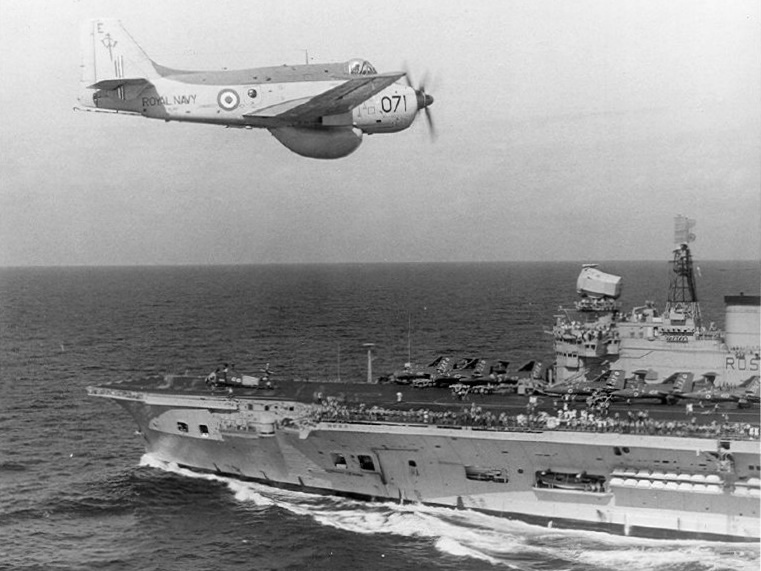
Fairey Gannet over the Eagle in the 1960s
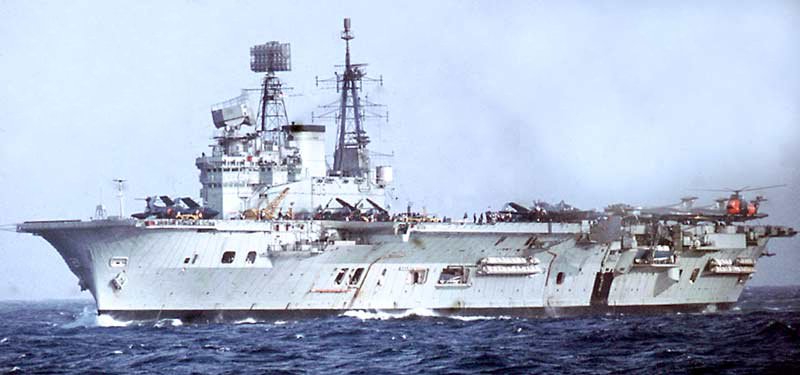
HMS Eagle in the Mediterranean January 1970
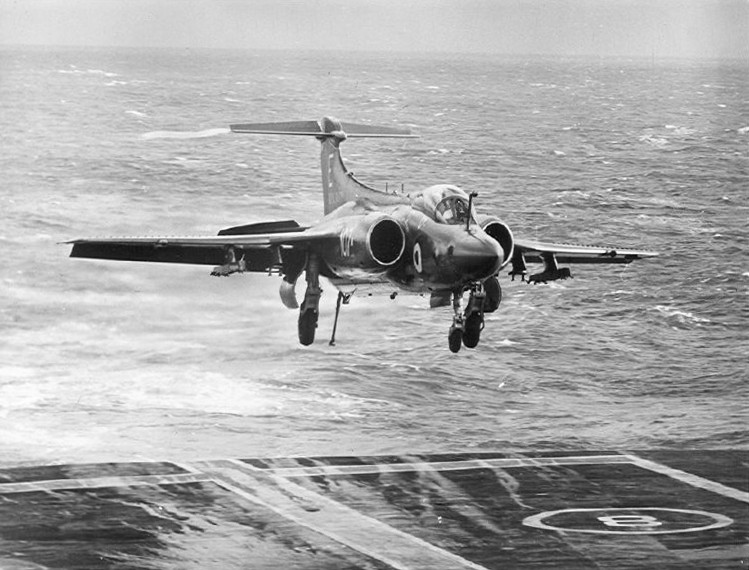
Buccaneer landing on the Eagle in 1971
1966 refit to enable the Phantom
In early 1966, HMS Eagle entered Devonport again to receive the single DAX II arrestor wire no.3, recommissioned in 1967. There was another later refit planned by the admirakty to put her on her sister’s standard (Ark Royal) and operate the McDonnell Douglas Phantom, already tested successfully. Her two BS5 catapults coukd indeed project a fully-laden F-4 already but she lacked the proper Jet Blast Deflectors (steel plate design) while bridle catchers would be installed to the catapults to not be be lost after launch.
700P NAS’s Phantom FG1 trials required that a thick steel plate was chained to the deck behind the catapult and after each launch fire hoses sprayed it to cool it down before the next launch.
The admiralty estimated the total cost to fit proper blast deflectors and other minor changes at £5 million in 1968 but new Conservative government in 1970 confirmed instead the conversion of Hermes as a Commando carrier and withdrawal of Eagle. In February 1972, the Secretary of State for Defence, Lord Carrington estimated the true conversion cost proposed to be in reality close to £25–30 million with a greater manpower and maintenance cost for the Phantom park. It was estimated that maintaining a carier strike force was “beyond britain”. Ark Royal was also concerned by the axe already. To preserve Eagle in reserve refits were estimated at £4 million, every 3–4 years and a maintenance crew of 350–400 at £1.5–2 million yearly plus 4-5 month reactivation time. Since she no longer could operate the Phantom, thios cost to maintain a now obsolete Sea Vixen squadron was seen as unjustified, especially in light of the last Ark Royal refit at £32 million. On the 48 Phantom FG1s ordered in the end, 20 were diverted to the RAF and onky a few loaned back to the Navy for the training unit 767 NAS disbanded in 1972.
Early retirement
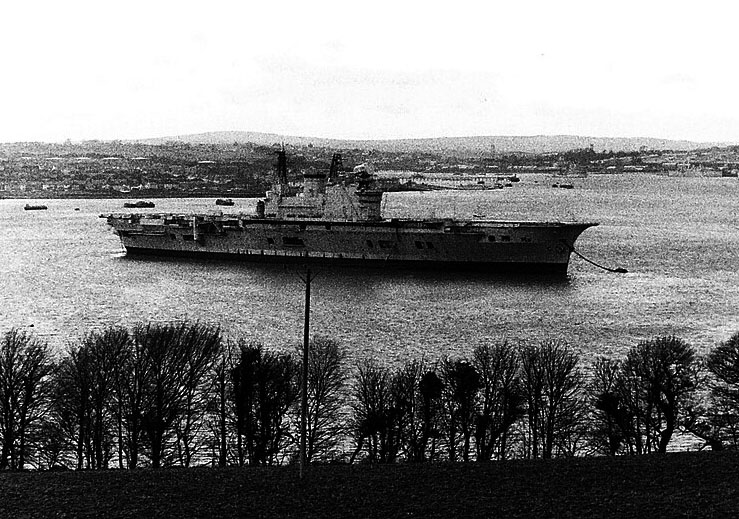
Probably the last straw was the 1966 decision to cut back the fixed wing carrier fleet with HMS Centaur now an accommodation ship, Victorious to be prematurely retired after a minor fire and both Eagle and her sister ship now concerned. Ark Royal, which operated Phantoms, was even put on a greater strain than her sister and in 1970 she was considered already worn out. No willing in 1970 to engage any modernizaton or even place her in reserve to save cost, she was paid off in January 1972 at Portsmouth. For the British taxpayers money she had 20 years and 4 months of useful service. Completely stripped she was towed to Devonport for a non-maintained reserve, moored in a stretch of the River Tamar (Hamoaze). In 1974, she was towed up river and berthed at 10 Dock, Devonport Dockyard for further stripping, notably to maintain her sister Ark Royal, and towed back to her previous mooring.
Util 1976 she was officially still in reserve, but completely cannibalized for Ark Royal, she was sold for scrap, towed from Devonport on 14 October 1978 to Cairnryan (Stranraer) for demolition as her sister arrived in her place just five days later. One anchor was preserved, now at the entrance to the Fleet Air Arm Museum in Yeovilton.
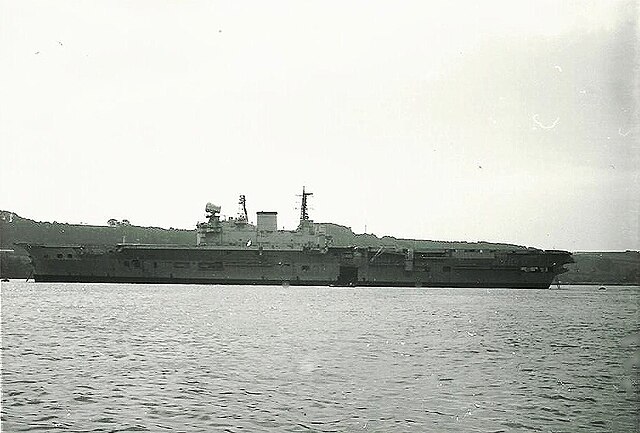
Eagle was paid off at Portsmouth in January 1972 and was laid up at Devonport later the same year. Although Eagle was officially in fully including Sea Hawks, maintained reserve, the difficulty of keeping Ark Royal running meant that she was progressively ‘cannibalised’, and she was finally towed away to the breakers in 1978.
Read More/Src
Gallery
Books
Conway’s all the world’s fighting ships 1947-95
Note that Chesneau (Book above) gives a standard displacement of 36,800 long tons (37,391 t) and full load displacement of 45,720 long tons (46,454 t) but Jane’s Fighting Ships 1960–61 gives a full load displacement of 53,000 long tons (53,850 t).
Ireland, Bernard. The Illustrated Guide to Aircraft Carriers of the World. Hermes House, London, 2005.
Johnstone-Bryden, Richard. Britain’s Greatest Warship: HMS “Ark Royal IV”. Sutton Publishing Ltd., Stroud, 2000.
McCluskie, Tom (2013). The Rise and Fall of Harland and Wolff. Stroud: The History Press.
Jane’s Fighting Ships 1955–56 page 286
Jane’s Fighting Ships 1967–68 page 286
McCart, Neil HMS Eagle 1942–1978, pub Fan Publications, 1996
Blackman, Raymond V. B. Jane’s Fighting Ships 1971–72. London: Sampson Low, Marston & Co Ltd, 1971.
Blackman, Raymond. Ships of the Royal Navy. London: Macdonald and Jane’s, 1973.
Brown, David. Carrier Air Groups: HMS Eagle. Windsor, UK: Hylton Lacy, 1972.
Brown, David K. Nelson to Vanguard: Warship Design and Development 1923–1945. Barnsley, UK: Seaforth Publishing, 2012.
Brown, David K. and Moore, George. Rebuilding the Royal Navy: Warship Design Since 1945. Barnsley, UK: Seaforth Publishing, 2012.
Chesneau, Roger. Aircraft Carriers of the World, 1914 to the Present: An Illustrated Encyclopedia. London: Brockhampton Press, 1998.
Gardiner, Robert and Stephen Chumbley. Conway’s All The World’s Fighting Ships 1947–1995. Annapolis, Ma, USA:Naval Institute Press, 1995.
McCart, Neil. HMS Eagle 1942–1978. Cheltenham, UK: Fan Publications, 1996.
Links
armouredcarriers.com hms-audacious class
archive.org hms-eagle.co.uk/
seaforces.org/
navypedia.org eagle
en.wikipedia.org/ Audacious class
quora.com How did the Audacious class compared
maritimequest.com/ hms eagle r05.
en.wikipedia.org/ HMS_Eagle R05
rnzaf.proboards.com hms-eagle-visit-1971
Videos
Model Kits
The subject was not well covered. Main query on scalemates
Let’s cite Eiriksson 1:600, Atlantic Models and Fujumi 1:700 which also made the Ark Royal.



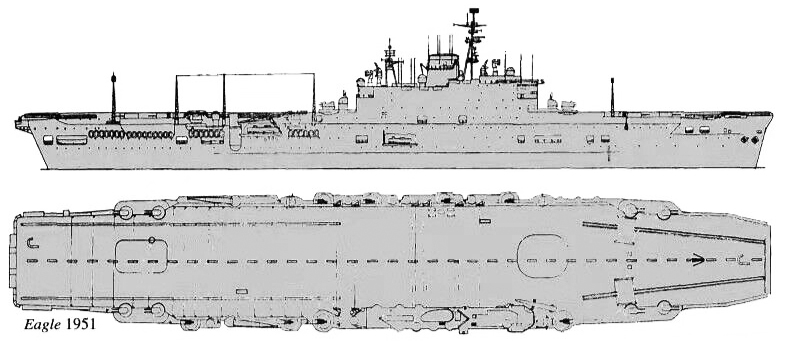
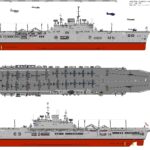
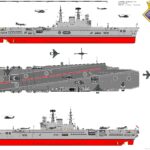
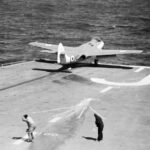
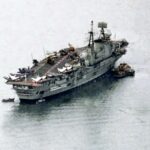
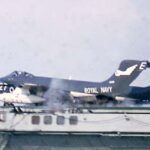
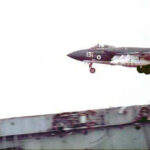
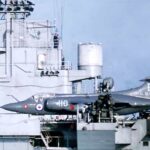
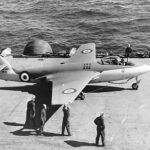
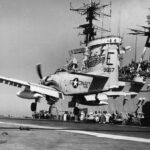
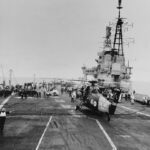
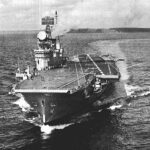
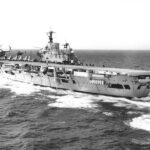
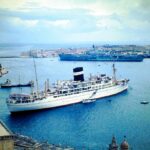
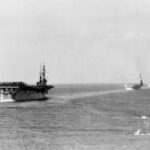
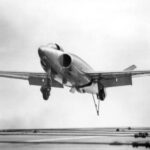
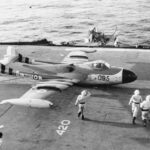
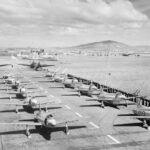
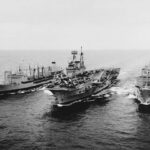
 Latest Facebook Entry -
Latest Facebook Entry -  X(Tweeter) Naval Encyclopedia's deck archive
X(Tweeter) Naval Encyclopedia's deck archive Instagram (@navalencyc)
Instagram (@navalencyc)





 French Navy
French Navy Royal Navy
Royal Navy Russian Navy
Russian Navy Armada Espanola
Armada Espanola Austrian Navy
Austrian Navy K.u.K. Kriegsmarine
K.u.K. Kriegsmarine Dansk Marine
Dansk Marine Nautiko Hellenon
Nautiko Hellenon Koninklije Marine 1870
Koninklije Marine 1870 Marinha do Brasil
Marinha do Brasil Osmanlı Donanması
Osmanlı Donanması Marina Do Peru
Marina Do Peru Marinha do Portugal
Marinha do Portugal Regia Marina 1870
Regia Marina 1870 Nihhon Kaigun 1870
Nihhon Kaigun 1870 Preußische Marine 1870
Preußische Marine 1870 Russkiy Flot 1870
Russkiy Flot 1870 Svenska marinen
Svenska marinen Søværnet
Søværnet Union Navy
Union Navy Confederate Navy
Confederate Navy Armada de Argentina
Armada de Argentina Imperial Chinese Navy
Imperial Chinese Navy Marinha do Portugal
Marinha do Portugal Mexico
Mexico Kaiserliche Marine
Kaiserliche Marine 1898 US Navy
1898 US Navy Sovietskiy Flot
Sovietskiy Flot Royal Canadian Navy
Royal Canadian Navy Royal Australian Navy
Royal Australian Navy RNZN Fleet
RNZN Fleet Chinese Navy 1937
Chinese Navy 1937 Kriegsmarine
Kriegsmarine Chilean Navy
Chilean Navy Danish Navy
Danish Navy Finnish Navy
Finnish Navy Hellenic Navy
Hellenic Navy Polish Navy
Polish Navy Romanian Navy
Romanian Navy Turkish Navy
Turkish Navy Royal Yugoslav Navy
Royal Yugoslav Navy Royal Thai Navy
Royal Thai Navy Minor Navies
Minor Navies Albania
Albania Austria
Austria Belgium
Belgium Columbia
Columbia Costa Rica
Costa Rica Cuba
Cuba Czechoslovakia
Czechoslovakia Dominican Republic
Dominican Republic Haiti
Haiti Hungary
Hungary Honduras
Honduras Estonia
Estonia Iceland
Iceland Eire
Eire Equador
Equador Iran
Iran Iraq
Iraq Latvia
Latvia Liberia
Liberia Lithuania
Lithuania Mandchukuo
Mandchukuo Morocco
Morocco Nicaragua
Nicaragua Persia
Persia San Salvador
San Salvador Sarawak
Sarawak Uruguay
Uruguay Venezuela
Venezuela Zanzibar
Zanzibar Warsaw Pact Navies
Warsaw Pact Navies Bulgaria
Bulgaria Hungary
Hungary

 Bundesmarine
Bundesmarine Dutch Navy
Dutch Navy Hellenic Navy
Hellenic Navy Marina Militare
Marina Militare Yugoslav Navy
Yugoslav Navy Chinese Navy
Chinese Navy Indian Navy
Indian Navy Indonesian Navy
Indonesian Navy JMSDF
JMSDF North Korean Navy
North Korean Navy Pakistani Navy
Pakistani Navy Philippines Navy
Philippines Navy ROKN
ROKN Rep. of Singapore Navy
Rep. of Singapore Navy Taiwanese Navy
Taiwanese Navy IDF Navy
IDF Navy Saudi Navy
Saudi Navy Royal New Zealand Navy
Royal New Zealand Navy Egyptian Navy
Egyptian Navy South African Navy
South African Navy






























 Ukrainian Navy
Ukrainian Navy dbodesign
dbodesign